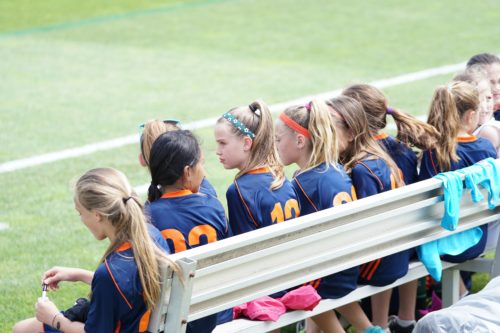
As September nears, parents and students prepare for the happiest/saddest time of the year: the new school year. While parents and students worry about clothes, school supplies, and grades, physical therapists worry about the onset or exacerbation of spine pain and injuries related to sports. Our expertise is in the prevention and treatment of musculoskeletal disorders and injuries.
Unfortunately, back pain and sport-related injuries become more prevalent this time of year. I want to discuss some safety tips and guidelines in hopes reducing the likelihood of requiring our services.
BACKPACK SAFETY
Backpacks are a popular and convenient way for children and teenagers to carry school supplies. They are designed to distribute weight/load of the contents to the proper/strongest body muscles. Proper use can help reduce stress on the spine and other body areas. Improperly fitted or worn backpacks can place undue stress on the muscles and joints of the neck, shoulders, mid-back, lower back, and even the legs. This can lead to acute or chronic pain, and contribute to chronic postural faults.
Tips for Choosing Right Backpack
- Make sure you have proper size. Age/height and width recommendations can easily be found on the internet
- Shoulder straps should be wide and padded
- Tighten straps to keep load closer to spine
- Organize heavy items low and towards center of backpack
- Pack light if possible. Only carry what you need for each school day.
- Consider a cross-body pack as an alternative

Tips for parents to ensure child’s safety and health
- Encourage child/teenager to tell you about any numbness, tingling, or discomfort in arms or legs. Such symptoms may indicate poor fit or the load is too heavy
- Watch child put on/take off backpack to see if it is a struggle. If it seems too heavy, remove some items, and have him/her carry items in arm to ease load on the spine
- Do not ignore any back pain in a child or teenager
- Consult with school or teachers to ensure student is only bringing necessary items each day
YOUTH SPORT SAFETY
Youth sports are an integral part of our society. Participation in sport activities provides a number of valuable opportunities for children and adolescents: improve in physical fitness and coordination, develop motor skills, cultivate self-discipline and teamwork, and develop time management skills.
However, because young athletes are still growing, they are at greater risk for injury, compared to adults. The consequences of over-training or hyper-participation can include injuries that impair growth, and lead to long-term musculoskeletal problems. Fortunately, many youth sport injuries can be prevented.
Here are a few items to consider for your young athlete:
- Children/adolescents are not adults. Youth athletes are still growing. Bones, muscles, tendons, and ligaments are not mature, making them more susceptible to injury. Moreover, this physical immaturity creates significant differences in stamina, strength, power, and coordination between youth and adult athletes.
- Children/adolescents vary in size. Young athletes of same age can differ greatly in size and physical maturity. Remember, the larger, faster athlete can produce and deliver far greater forces compared to a smaller one. This is especially important in contact or collision sports.
- Young athletes can incur serious injuries. Growth plates are areas of developing cartilage at the end of long bones where bone growth occurs. Growth plates are weaker compared to nearby ligaments and tendons. A twisted ankle or elbow pain can result in a more serious diagnosis in a skeletally mature young athlete.
- Consult the STOP Sports Injuries website (http://www.stopsportsinjuries.org/). This is a terrific educational foundation, partnered with multiple health organizations, to educate parents, athletes, and coaches on how to prevent overuse sports injuries.
STRATEGIES FOR PREVENTING YOUTH SPORTS INJURIES
Here are some basic tips to help make this year a safe and successful for your young athlete.
- Make sure the athlete is prepared to play. Encourage year round activity. A summer spent playing video games does not prepare one for football, soccer, wrestling, or volleyball season.
- Make sure sport equipment is appropriate for level of sport and is properly fitted.
- Always make time for a proper warm-up before practice or a game.
- Stay hydrated.
- Make time for sleep. A tired athlete is not mentally or physically 100% and is more susceptible to injury.
- Do not ignore pain. Young athletes are highly susceptible to “overuse’’ injuries: look for swelling, acute tenderness at the site, changes in form/technique, and/or decreased interest in practice.
- Remember, the musculoskeletal system of the young athlete is immature and pain from repetitive motion may appear separately from the actual site of injury, ie: a knee ache can be due to a hip injury or weakness; elbow pain can be due to rotator cuff weakness.
- Finally, whether an injury is acute or due to overuse, pain that persists or which affects athletic performance should be examined by a physician. Young athletes should never be allowed or encouraged to “work through the pain.”
Should you have any specific questions or concerns please reach out to your nearest Rebound Physical Therapy clinic in Bend, Redmond, Prineville, Lapine or Sunriver. reboundoregon.wpengine.com

